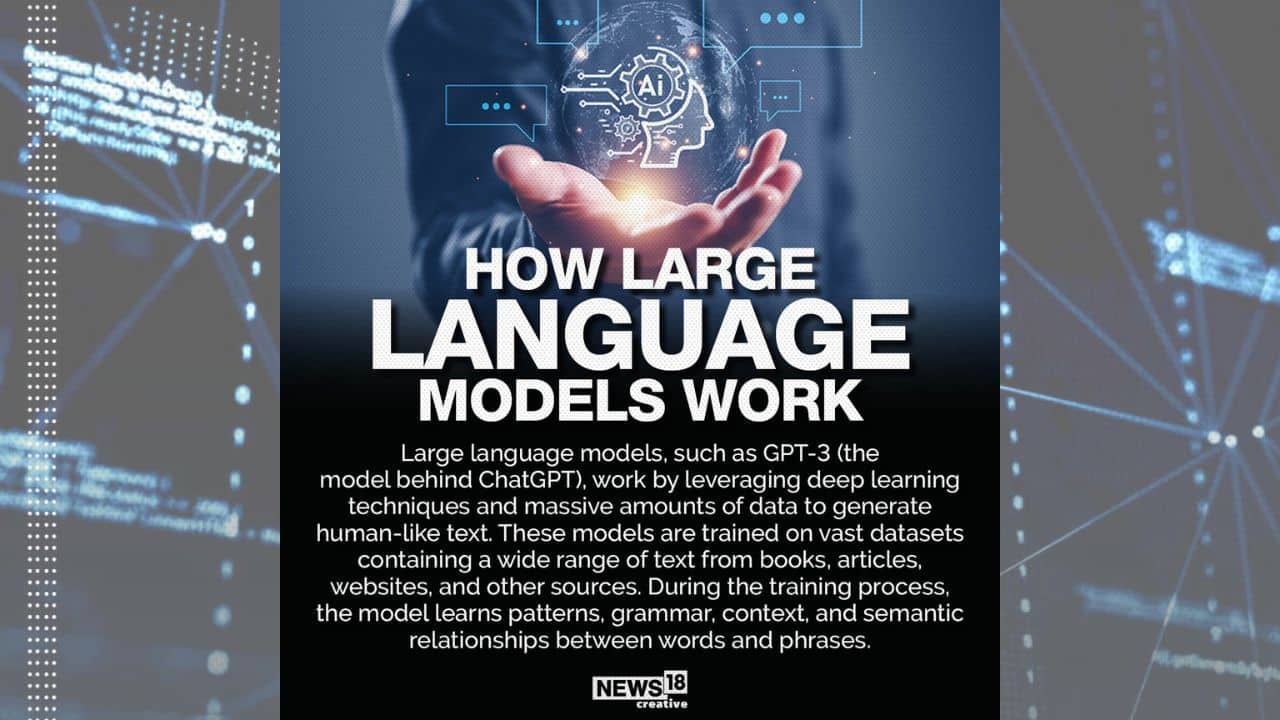
Large language models, such as GPT-3 (the model behind ChatGPT), work by leveraging deep learning techniques and massive amounts of data to generate human-like text. These models are trained on vast datasets containing a wide range of text from books, articles, websites, and other sources. (Image: News18 Creative)
Here is a stepwise illustration of how large language models work. (Image: News18 Creative)
Large language models require a massive amount of data to train on. These datasets are collected from various sources. (Image: News18 Creative)
The collected data is preprocesses to clean and normalize the text. This involves tasks like removing irrelevant characters, tokenizing the text into individual words or subwords, and converting the text into a suitable format for training. (Image: News18 Creative)
The preprocessed data is used to train the language model. Training involves exposing the model to the input data and fine-tuning its parameters using deep learning techniques. (Image: News18 Creative)
Large language models typically use transformer architecture. Transformers consist of multiple layers of neural networks that allow the model to capture complex relationships between words and understand the context of the text. (Image: News18 Creative)
Transformers utilize an attention mechanism that enables the model to focus on different parts of the input text simultaneously. (Image: News18 Creative)
Once the model is trained, it can be used for inference. During inference, you input a prompt or a question, and the model generates a response based on its understanding of the context and the patterns it has learned from the training data. (Image: News18 Creative)
The model generates text by sampling from a probability distribution. It considers the context and the likelihood of different words or phrases appearing next to produce a coherent and contextually relevant response. (Image: News18 Creative)
The generated text is evaluated based on various metrics, such as coherence, grammar, and relevance to the given prompt. Evaluation helps assess the quality of the model’s responses and identify areas for improvement. (Image: News18 Creative)
The training process is typically iterative. The model is trained multiple times, adjusting its parameters and fine-tuning its performance based on feedback and evaluation results. (Image: News18 Creative)
Once the model is deemed to have satisfactory performance, it can be deployed for use in various applications. Large language models have applications is natural language understanding, chatbots, text generation, language translation, and more. (Image: News18 Creative)
Discover the latest Business News, Sensex, and Nifty updates. Obtain Personal Finance insights, tax queries, and expert opinions on Moneycontrol or download the Moneycontrol App to stay updated!









